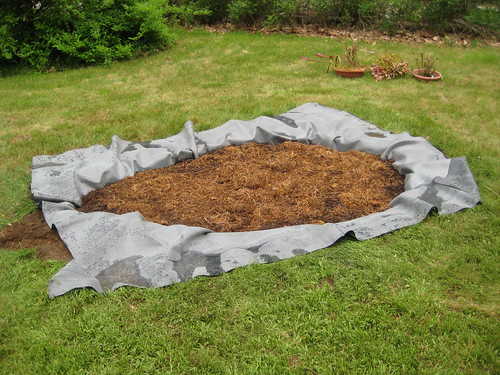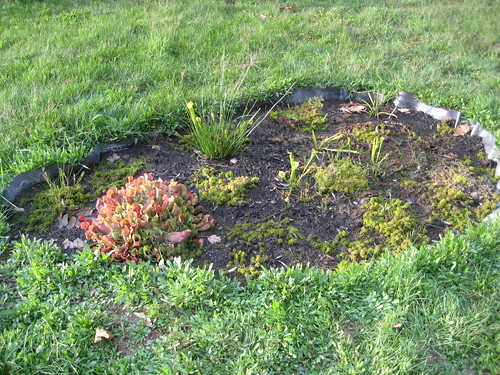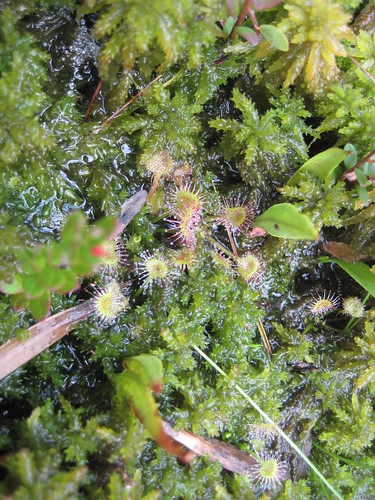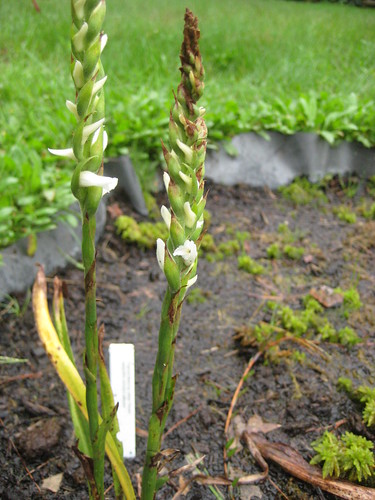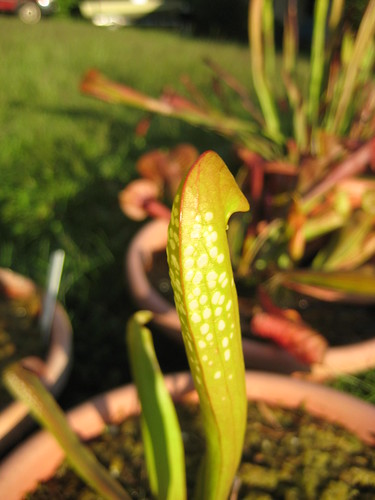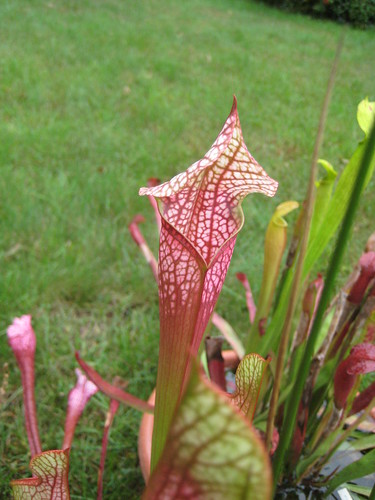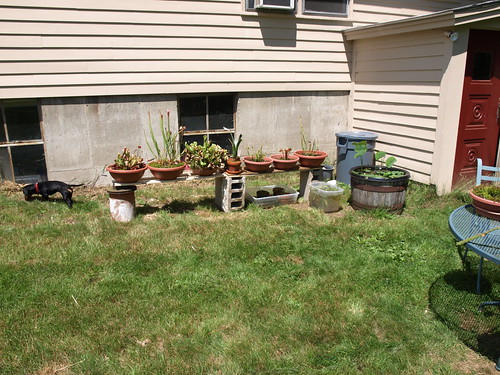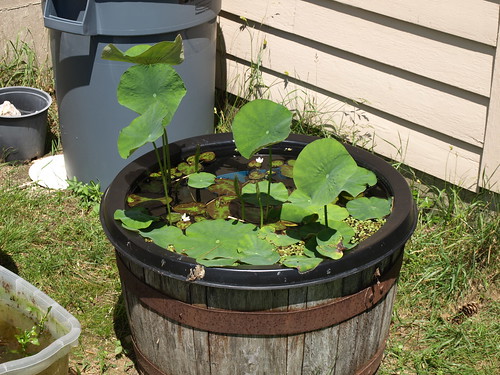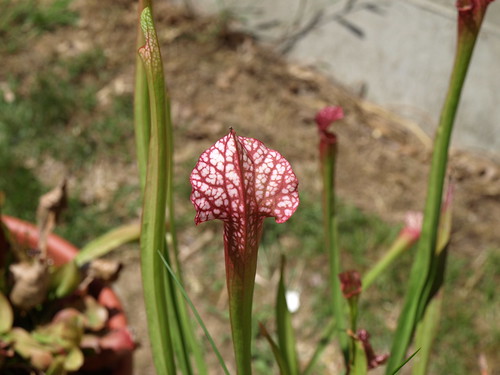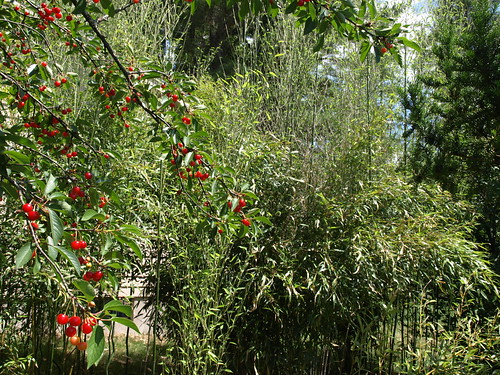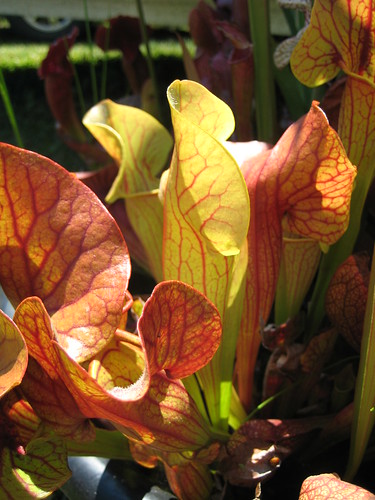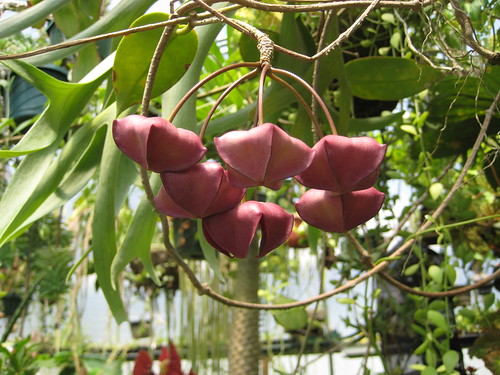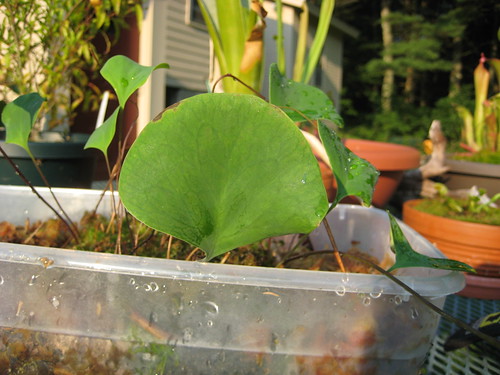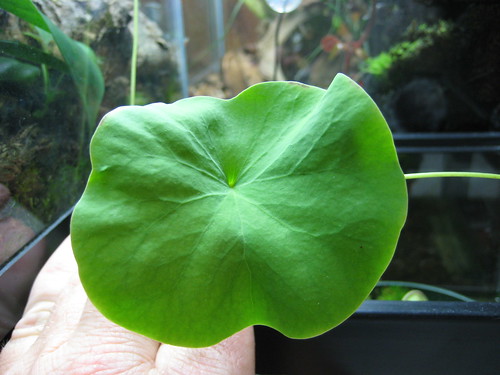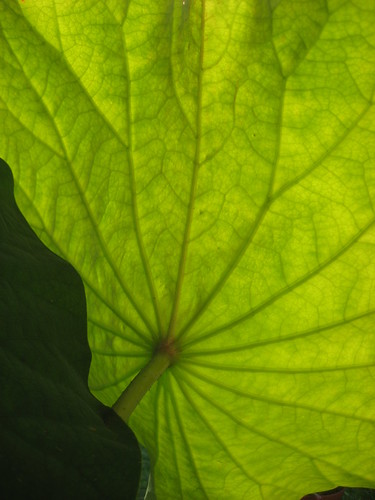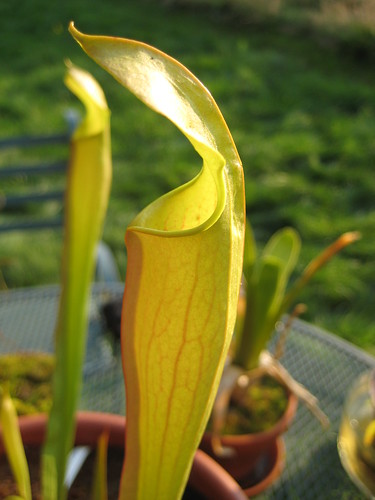I’ve been thinking about putting in a bog garden for a couple years now, since I first encountered Mike and Richard’s excellent example:
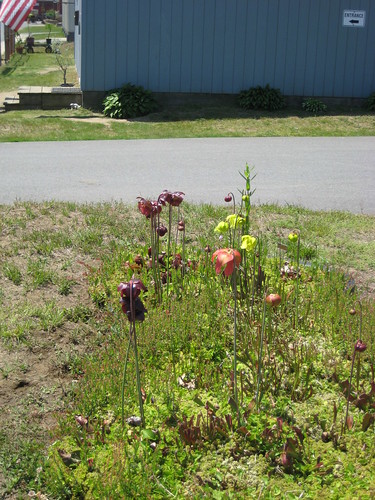
*
Info on how they did it is here.
Rather than use a preformed plastic pond, I decided to use pond liner (should be available at any nursery/greenhouse with a water garden section; I got mine from Wentworth Greenhouses). It went like this:
Layout – I used a garden hose to outline the bog. I wanted a teardrop shape; since my liner was 8′ x 10′, I sized the bog at 5′ x 7′ at its maximum. The 3′ extra is to accommodate an 18″ depth (obvious, but…). the teardrop is oriented so that the narrow end points at the low spot in the layout. We’ll see whether I pull it off, but what I want to suggest is a seep/spring that peters out into the grass – I’m going to transplant some Siberian Iris into the drainage area.
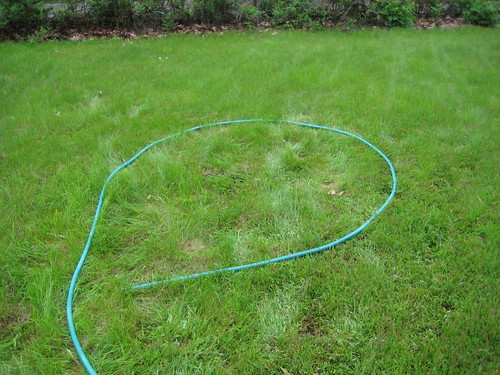
*
Digging out. A bamboo culm to span the sides, a tape measure for depth readings and a level. Getting the sides perfectly level is less critical with a bog that it is with a water garden – sphagnum will hide some sins. That being said, it’s probably best to avoid pitching the thing like a dang ski jump.
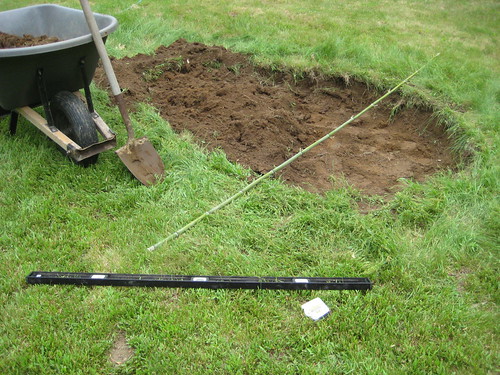
*
Dig? Dug!
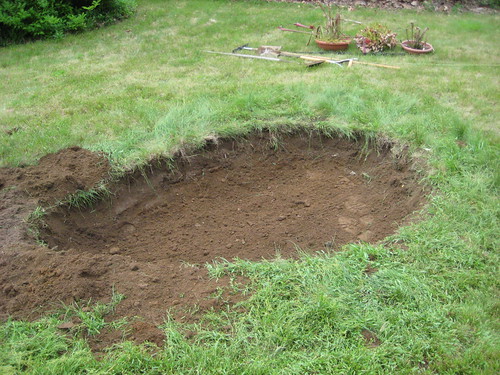
*
Most pond-liner how-tos I’ve seen recommend putting down special underlayment to protect the rubber and if my soil had been a little bonier I might have considered it. It’s not though; I’ve got nice sandy loam down to 18″, so I took the swamp yankee approach – a newsprint protective layer.
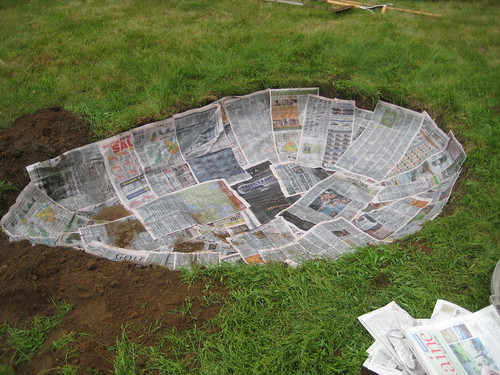
*
Laying the rubber in place:

*
And beginning the fill with a sphagnum peat/rainwater slurry:
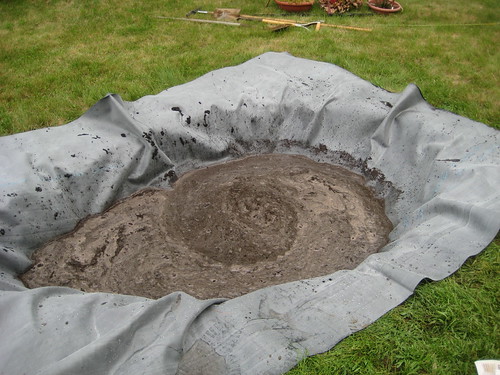
*
I used 3 1/2 bales of peat

to get it mostly filled up
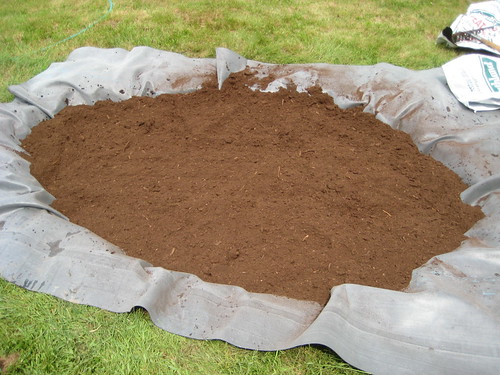
and then topped it with a bag of long fiber sphagnum (I’ll add another bag if I can find one).
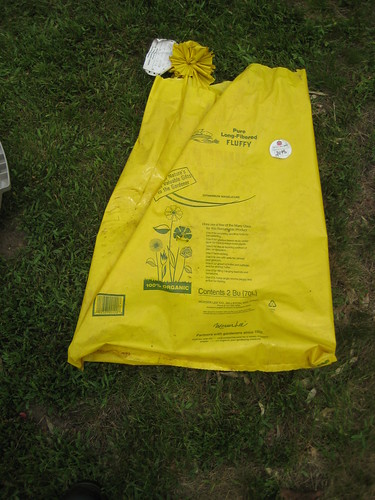
*
Voilà!
